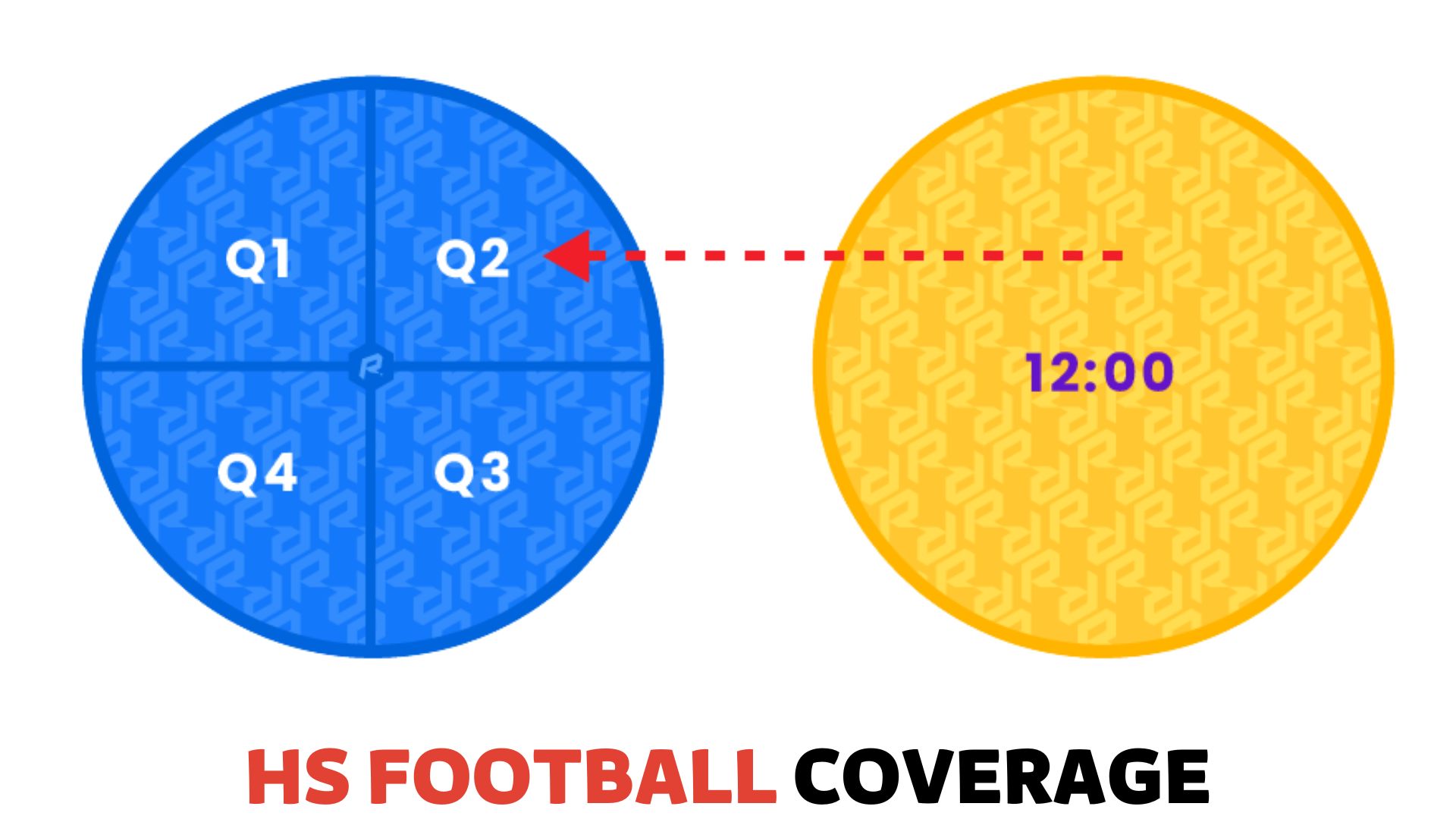
It’s more than just a game regarding High School Football. It’s called a lifestyle. The thrill, excitement, and adrenaline rush that come with the game make it unique. In a High School Football team, how many players? You probably don’t know the exact number. Relax, we are here! We will answer all your questions in this article. Stay tuned!
The Basics of High School Football
High School Football is simple. Two teams fight to score the most points. Each team has 11 players on the field. But the total number of players on a team can vary. We’ll dig deeper into that in the next section.
The playing field is a massive 100 yards of green grass, dotted with white yard markers and surrounded by a sea of screaming fans. The game is divided into four quarters. Each with an opportunity for players to show off their skill, determination, and heart.
Teamwork and scoring points are the goals of this game, which brings together youth athletes. Wins and losses aren’t everything. It’s about the journey, the bonds formed, and the memories made along the way.
With three minutes remaining, the clock ticks, and the fans cheer. But if they can’t make it, no problem! It’s the other team’s turn to shine.
How Many Players Are on a High School Football Team?
While the answer isn’t set in stone (unless you’re talking about a secret football society that has inscribed the answer onto a mysterious ancient tablet), the number of players on a High School Football team can range from a modest 30 to a whopping 100. It’s like comparing the size of a family reunion to the population of a small village.
You see, factors like school size, budget, and talent matter. Smaller schools might have fewer players, but they’re like a tight-knit family, where everyone knows each other’s names, favorite colors, and most embarrassing moments.
Bigger schools, on the other hand, boast larger rosters that resemble a small army, ready to storm the field with the force of a thousand cleats.
One constant remains, teamwork is vital. It’s like a perfectly synchronized dance number, with more grunting and fewer jazz hands.
Many high schools have so many football teams they could give the Marvel Cinematic Universe a run for its money. Varsity teams consist of the most experienced and skilled players, like the Avengers of the football world. Junior varsity and freshman teams are more like sidekicks. They provide opportunities for younger or less experienced players to develop their skills and eventually save the world.
Coaches and team managers have a job like herding cats, or in this case, burly teenagers in shoulder pads.
They must keep track of player eligibility, academic performance, and injuries while trying not to lose their minds. Think of them as football wizards, juggling the many variables to create a winning formula.
The Importance of Teamwork in High School Football
A HS Football team is like a puzzle. That means it is a really, really sweaty puzzle. Hmmm! Puzzle right? Yes, it is! Each piece, or player in this puzzle, has a specific role. When they work together, they create a beautiful picture, like a mosaic of muscle and determination.
Coaches highlight the value of teamwork, and not just because they enjoy watching their players participate in trust falls. It fosters companionship, communication, and success while looking like a sweaty band of brothers.
Effective communication is as crucial for a successful High School Football team. Because it is like a married couple on a road trip, that means players must relay information quickly and accurately during games.
Which includes a well-coordinated game of Telephone, but with fewer misunderstandings and more helmet-to-helmet contact. Off the field, open communication builds trust and strengthens relationships among teammates, turning them into a brotherhood of cleat-wearing warriors.
Coaches often incorporate team-building exercises into practice sessions, like a corporate retreat with fewer PowerPoint presentations and more wind sprints. These activities promote unity, trust, and cooperation while making the players look like they’re auditioning for a reality TV show.
Examples include trust falls (think of it as a trust fall meets the NFL Combine), problem-solving games that would make Sherlock Holmes proud, and group outings where they bond over the shared love of hot wings and nachos.
The Benefits of Playing High School Football
Playing football has many bonuses. We’re not just talking about the post-game pizza parties. Players enjoy physical fitness (hello, biceps), discipline (who knew getting up at 5 AM could be fun?), and new friendships (touchdown buddies for life!). They also learn valuable life lessons, like the kind you’d find in a fortune cookie, but with more grass stains.
Teamwork, perseverance, and time management. These traits help them become as essential as the playbook in school and future careers.
High School Football players must balance academics, sports, and personal life, like juggling flaming footballs while riding a unicycle.
This requires discipline and time management skills to make even the most organized parent green with envy. These skills prove valuable in college and professional settings, transforming them into multitasking superheroes.
HS Football offers opportunities to make new friends and network with peers, coaches, and mentors. These connections can lead to academic, athletic, and professional opportunities. That includes the occasional offer to help someone move.
Talented football players may receive college scholarships. This turned them into academic gladiators ready to conquer the world of higher education.
This can help offset the cost of tuition and provide access to quality academic programs. The scent of this is like a golden ticket to the Wonka factory of knowledge.
Playing HS Football teaches players important life lessons, like a wise old sensei in a sports movie montage. They learn about hard work, perseverance, humility, and leadership—all while rocking those tight football pants.
Challenges of Playing High School Football
Football has its share of challenges. Players face tough competition and demanding training. They constantly push themselves to improve and secure a spot on the team or else risk being benched next to the water cooler.
HS Football players take rigorous training that would make even a Navy SEAL think twice. Practices can be physically and mentally demanding. That’s like a combination of CrossFit and a chess tournament.
HS Football players must stay committed to their fitness, nutrition, and mental health to perform at their best. They have to make sure to avoid the lure of fast food all the time!
Balancing sports in HS Football can be harder than walking a tightrope while juggling textbooks. Players must maintain good grades to stay eligible for the team, meaning time management and prioritization become essential for academic success. It’s like being a student-athlete-superhero hybrid, complete with a cape made of homework.
High School Football players often experience pressure from coaches, peers, and family members. They might treat them like the star of their very own reality TV show. Handling these expectations can be challenging.
That’s like solving a Rubik’s Cube while riding a unicycle on a tightrope. Players must develop coping mechanisms to manage stress and perform well on the field, turning them into gridiron gurus of zen-like calm.
So, remember that behind every High School Football player is a tale of hard work, resilience, and the ability to laugh in the face of challenges. They might not wear capes, but their superpowers shine through every time they take to the field.
How Do High School Football Coaches Choose Their Starting Lineup?
Coaches always have a lot to think about. Full-blown automated thoughts in the brain. Their heads are pressure cookers and boiling with full of thoughts. These thoughts are kind of like mad scientists developing the perfect football Frankenstein.
They consider skill, position, and commitment, watching players during practices and scrimmages like a hawk stalking its prey. This way, they can choose the best athletes for game day.
Coaches value dedication and hard work more than a pirate treasures gold doubloons. Players who reveal a dedication to the team and their personal development are more likely to earn a spot in the starting lineup. These players are sometimes called by the title of “coach’s pet.”
Coaches also consider team chemistry. They turn the HS Football players into gridiron alchemists. They look for players who work well together, like peanut butter and Jelly, Batman and Robin, or Netflix and Chill.
A positive team atmosphere is crucial, and coaches search for athletes who contribute to that vibe, whether by cracking jokes, sharing snacks, or leading team sing-alongs.
What Are Some Common Injuries Associated With Playing High School Football?
Injuries in football can be as unpredictable. These include Sprains, strains, and concussions are as common as seeing a referee throw a yellow flag.
Other injuries include fractures (ouch!), dislocations (double ouch!), and overuse injuries, which sound like what your smartphone might experience.
Proper coaching, protective gear, and safety rules help reduce injury risks. Just imagine wearing oven mitts while juggling flaming footballs! Players should follow guidelines for warm-ups, stretching, and conditioning.
Immediate treatment and rehabilitation are essential for a safe and timely recovery. This turns players into part-time superheroes and part-time physical therapy enthusiasts.
Concussions are a significant concern in HS Football. It is like a pesky mosquito buzzing around a delightful picnic. Coaches, players, and parents must be aware of concussion symptoms and protocols. Early detection and proper management are crucial for player safety.
This ensures that everyone can continue to enjoy the comedy and camaraderie that comes with a good game of football.
What Role Do Referees Play in High School Football Games?
Referees are like the hall monitors of the football world. They keep the game fair and orderly. They enforce the rules and watch the action.
They also make crucial calls while trying not to trip over the players. With their stylish black and white stripes, they maintain a safe environment for both teams, acting as pigskin peacekeepers.
A typical High School Football officiating crew consists of five to seven referees. This is kind of like a mini Zebra Party! Each official has a specific role, such as the head referee (the top zebra), line judge (the sidekick), back judge (the eyes in the sky), or field judge (the one watching all those yard lines). Together, they form the Justice League on the football field.
High School Football referees undergo training and certification that would make them experts. They ensure they can effectively officiate games, which includes learning the rules, proper positioning, and communication techniques.
Conclusion
The number of players on a High School Football team varies. Teamwork and companionship are crucial. Football offers many benefits and challenges. Understanding the roles of coaches, referees, and players helps you appreciate the game. The game has its challenges, including tough competition and demanding training. Still, players who persevere and work hard can reap many benefits, such as physical fitness, discipline, and new friendships.
- Read Also: Should High School Football Be Banned?















